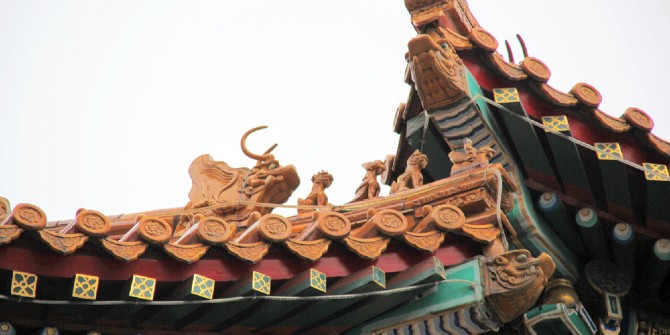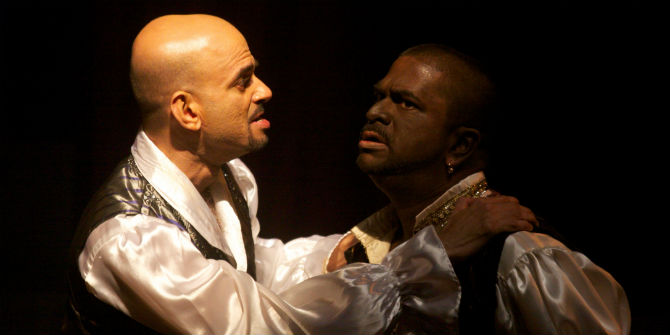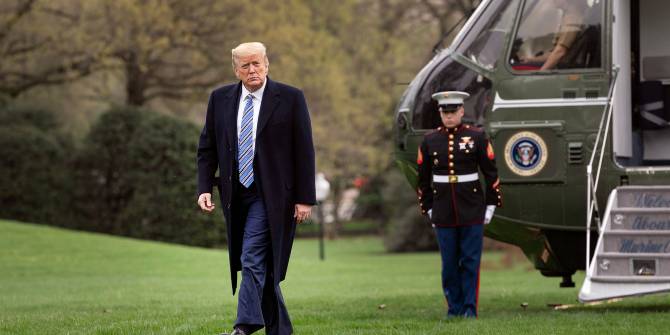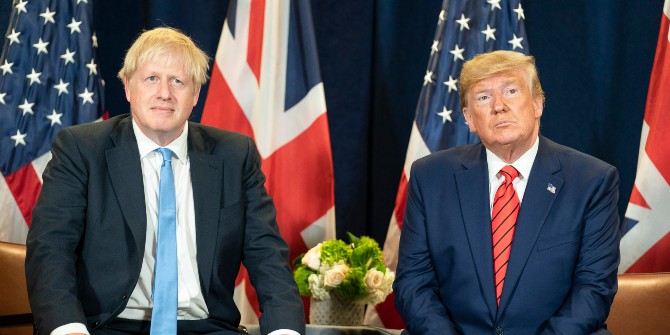The WTO’s mechanism for settling disputes is in crisis. But neither Trump nor the United States in general are entirely to blame. Dan Power and Mikael Hemlin (LSE) explain the roots of the current impasse.
For nearly two decades, the Doha Development Round has been deadlocked – incapacitating the World Trade Organisation’s legislative pillar. Nevertheless, its dispute settlement mechanism, colloquially referred to as the institution’s “crown jewel”, has proven vital in containing trade friction and in evolving the rules-based international trading system.

However, in recent years fundamental disagreements have surfaced regarding how WTO law should be applied, and to what extent its scope is legitimate. These disagreements undermine the dispute settlement process and have cast doubt on its longevity. Some members even question the desirability of a rules-based trading system.
Ratified in 1994, the WTO Agreement included the Dispute Settlement Understanding (DSU), the foundational document of the WTO’s two-tier dispute settlement mechanism. Consisting of an adjudication panel alongside a seven-person appellate body (AB), the DSU represents a judicialisation of the trading system. In contrast to its GATT predecessor, which relied on political mediation to resolve trade disputes, the DSU is predicated on the norms of judicial independence and legal reasoning. This shift made WTO agreements legally enforceable, ushering in a “rules-based approach” to the international trading system.
However, the past decade has seen this supposed crown jewel of the WTO become increasingly tarnished, with the AB currently in a state of paralysis. The origins of this crisis can be traced back to 2011, when the Obama administration blocked an AB member’s re-appointment for “not promoting US interests.” The Trump administration has assumed a similar strategy, blocking all AB appointments since 2017. As of December 2019, the AB is effectively disabled, with only one remaining member – two short of the required number for hearing new cases. Consequently, panel reports that a respondent to a case disagrees with may be unilaterally rejected, and the DSU’s emphasis on impartial and legally binding resolutions is suspended.
But viewing the US as the principal culprit in the AB’s dismantlement overlooks the deeper roots of the dispute settlement’s current crisis, and its broader implications. Some attribute the ongoing US-China trade war to the breakdown of the dispute settlement. While relevant, this fails to place the current predicament in an international political context. Indeed, the predominance of the Chinese state-capitalist model, with its state-owned enterprises (SOEs) and use of subsidies, has prompted the US to retaliate with tariffs and complaints to the WTO. Moreover, the AB’s rulings on the definition of a “public body” pertaining to Chinese SOEs, and its disapproval of America’s “zeroing” approach to calculating anti-dumping duties, have frustrated the US. The US tactic of blocking the AB may well be an effort to increase its leverage in pushing the WTO to reform its position on “unfair” Chinese trade practices. Such a strategy is in line with the Trump administration’s dislike of multilateralism and its stated preference for quid pro quo trading arrangements.
Although the trade conflict between China and the US may have instigated the crisis, two interrelated factors have simultaneously underpinned the DSU and contributed to its fragility. Firstly, the WTO has 164 members, all at varying stages of development and with different economic policy agendas. As a result, they disagree about what constitutes a “market distortionary” trade policy, as opposed to a “legitimate” one. Secondly, the negotiated agreements that inform the WTO’s legal reasoning contain significant “constructive ambiguity”. In short, these texts – which require agreement by consensus – are deliberately ambiguous in order to facilitate agreement between countries with extraordinarily diverse capitalist models. As a result, an AB ruling has the power to legitimise Chinese subsidies of SOEs, and disqualify the US interpretation of the underlying agreement. The current crisis is, therefore, not so much a US-China battle as an intrinsic paradox between regulatory sovereignty and economic integration.
For example, let’s take a look at the current list of US grievances with the current system. Among the most salient concerns are the AB’s supposed judicial activism, establishment of legal precedent, infringements of municipal law and excessive use of obiter dicta. In sum, US officials allege that the AB is transgressing its mandate by deliberately trying to further its own discretion, and that it is doing so at the expense of the US’s right to shield itself from “illegitimate” or “distortionary” trade policies pursued by other countries, notably China.
One concrete manifestation of this is the public body case of 2011 noted above. In brief, the substance of the dispute concerned what should be defined as a public body according to WTO law. This is significant because such a definition essentially determines the freedom with which state-owned or state-subsidised banks and enterprises may engage with exporting companies in financing and production processes. As mentioned, the AB went with a narrow definition quite close to the Chinese position, concluding that to be considered a public body, an institution must perform an “explicit government function”. As such, the US was not granted the right to introduce retaliatory measures against practices it considered tantamount to dumping, very much to the detriment of the country’s relationship with the AB.
Another manifestation is the AB’s repeated condemnations of the US’s controversial ‘zeroing’ methodology, which is often criticised for substantially overestimating dumping margins. However, this methodology is enshrined in US domestic law, which, according to article 17.6. of the DSU, arguably places it outside the purview of the AB. As such, the US argues that the AB’s consistent repudiation of zeroing constitutes judicial overreach, in that it is an attempt to overrule municipal legislation.
Several attempts have been made at reconciling the WTO members’ different positions, notably by making extensive concessions to the United States. The most notable of these attempts is the Walker Report – a proposal made by a commission led by the chairman of the DSB tasked with finding a solution to the impasse. So far these efforts have been to no avail. The US maintains its position and seems disinterested in finding a path forward.
So will it ever be possible to satisfactorily regulate international trade in today’s heterogenous global capitalist system? What constitutes a market distortion? What legitimates retaliation? And what retaliation? Answering these questions would require immense progress in thorny areas such as competition policy, environmental regulation and food security.
Given these huge challenges, it seems unlikely that a resolution to the crisis will be found any time soon, at least before the end of the Trump presidency. The EU, Canada and a number of other WTO members appear to have come to the same conclusion, as they have set up a so-called interim appeal arbitration mechanism (essentially a temporary AB) among willing member states as a contingency measure. We may well be witnessing a shift away from the rules-based trading system and a reversion to the negotiation-based model that prevailed before the conclusion of the Uruguay Round in 1994.
This article is the second on a series looking at the challenges facing the WTO. The first, by Steve Woolcock, is here. It draws on an extensive simulation of WTO reform as part of an LSE International Relations Department masters course option in economic diplomacy.
This post represents the views of the author and not those of the Brexit blog, nor the LSE.






